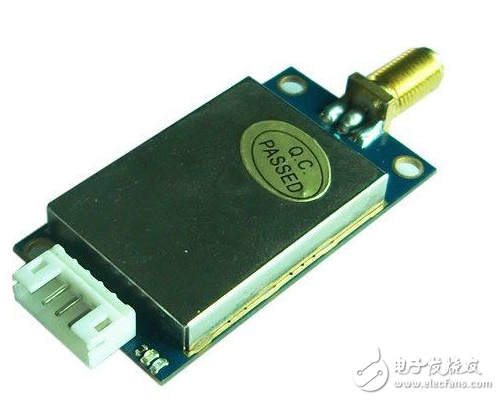The RS-485 bus interface is a widely used serial communication standard, known for its ease of network integration, strong resistance to interference, and long transmission distance. It employs balanced transmission and differential reception, which allows it to effectively reject common-mode noise. Additionally, the high sensitivity of the transceiver enables it to detect voltages as low as 200mV, making reliable communication possible over several kilometers. By using RS-485, only a single pair of twisted wires is needed to connect multiple systems, forming a distributed network. This setup is cost-effective, simple to implement, and ideal for industrial applications where long-distance communication is required.

**485 Communication Program for 51 Single-Chip Microcontroller**
```c
#ifndef __485_C__
#define __485_C__
#include
#include
#define unsigned char uchar
#define unsigned int uint
/* Communication Commands */
#define __ACTIVE_ 0x01 // Host requests if the slave exists
#define __GETDATA_ 0x02 // Host sends a read request
#define __OK_ 0x03 // Slave response
#define __STATUS_ 0x04 // Slave sends device status
#define __MAXSIZE 0x08 // Buffer size
#define __ERRLEN 12 // Any frame longer than 12 bytes is considered an error
uchar dbuf[__MAXSIZE]; // Buffer for device status information
uchar dev; // Local device number
sbit M_DE = P1^0; // Driver enable, active high
sbit M_RE = P1^1; // Receiver enable, active low
void get_status(); // Function to retrieve device status
void send_data(uchar type, uchar len, uchar *buf); // Send data frame
bit recv_cmd(uchar *type); // Receive command from host
void send_byte(uchar da); // Send a byte in a frame
void main() {
uchar type, len;
/* System initialization */
P1 = 0xFF; // Read local device number
dev = (P1 >> 2); // Extract device address
TMOD = 0x20; // Timer 1 mode 2
TH1 = 250; // Set initial value
TL1 = 250;
TR1 = 1; // Start timer
PCON = 0x80; // SMOD = 1
SCON = 0x50; // Mode 1, 9600 bps, receive enabled
ES = 0; // Disable serial interrupt
IT0 = 0; // Level-triggered external interrupt 0
EX0 = 1; // Enable external interrupt 0
EA = 1; // Global interrupt enable
while (1) {
if (recv_cmd(&type) == 0) continue; // Skip invalid frames
switch (type) {
case __ACTIVE_: // Host asks if the slave exists
send_data(__OK_, 0, dbuf);
break;
case __GETDATA_: // Host requests data
len = strlen(dbuf);
send_data(__STATUS_, len, dbuf);
break;
default: // Invalid command
break;
}
}
}
void read_status() interrupt 0 using 1 {
get_status(); // Update device status
}
/* Receives a command frame and checks it. Returns 1 if valid, 0 otherwise. */
bit recv_cmd(uchar *type) {
bit db = 0; // Set when last byte is 0xDB
bit c0 = 0; // Set when last byte is 0xC0
uchar data_buf[__ERRLEN]; // Buffer for received frame
// Implementation of receiving logic goes here
return 1; // Placeholder
}
#endif
```
This code provides a basic framework for implementing RS-485 communication on a 51-series microcontroller. The functions handle sending and receiving data frames, checking for valid commands, and updating device status. Proper configuration of the serial port and interrupts ensures smooth communication over the RS-485 bus.
Solder is an indispensable material for the manufacture of electronic products
Solder Wire,Lead Free Solder Wire,Solid Solder Welding Wire,Solder Tin Wire
Shaoxing Tianlong Tin Materials Co.,Ltd. , https://www.tianlongspray.com